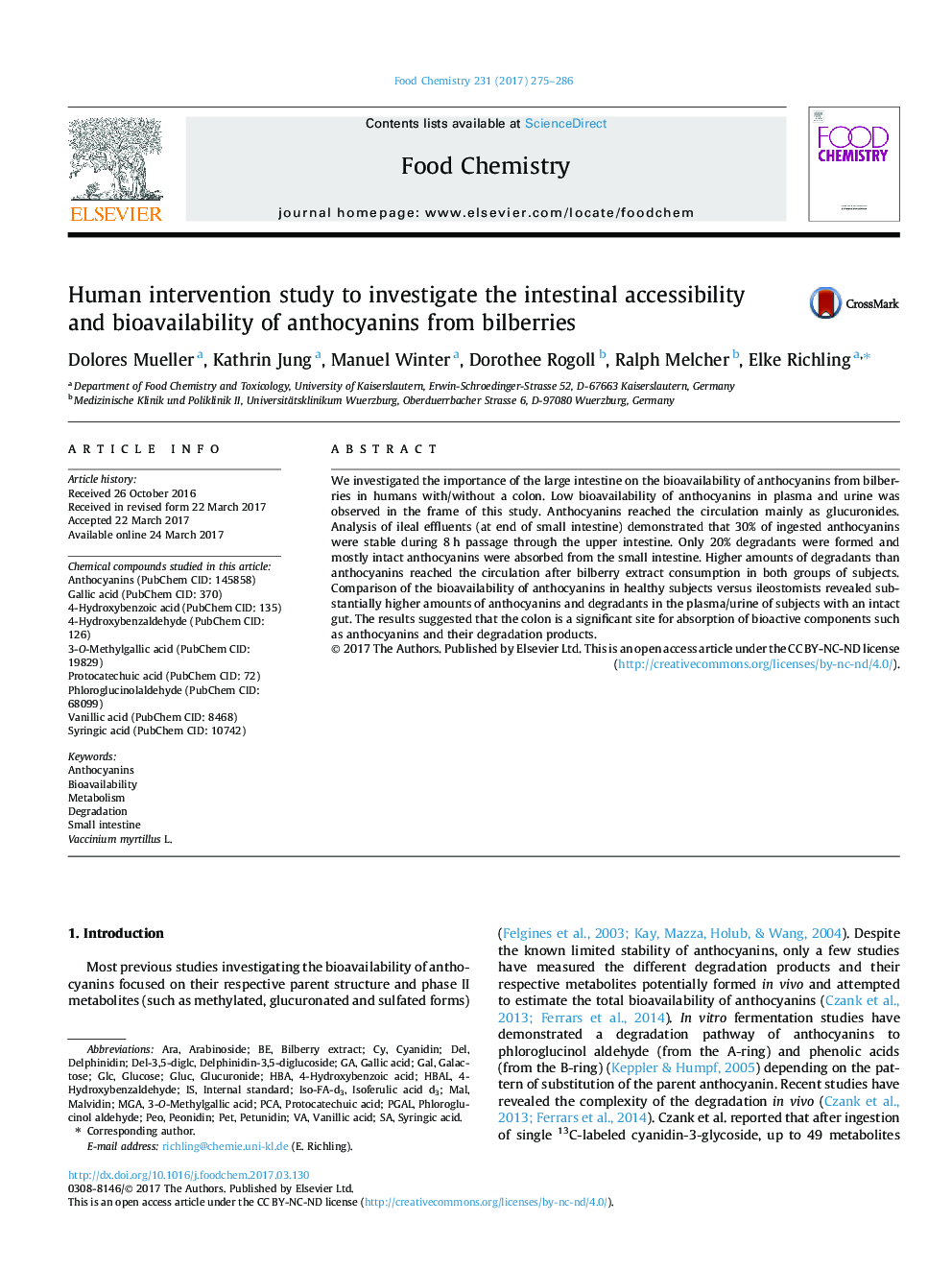| Article ID | Journal | Published Year | Pages | File Type |
|---|---|---|---|---|
| 5132892 | Food Chemistry | 2017 | 12 Pages |
â¢A human pilot intervention study was performed with volunteers with and without a colon.â¢High amounts of anthocyanins reach the colon after bilberry intake.â¢Degradation of anthocyanins plays an important role in the frame of bioavailability.â¢Colon was a significant site of anthocyanin absorption.
We investigated the importance of the large intestine on the bioavailability of anthocyanins from bilberries in humans with/without a colon. Low bioavailability of anthocyanins in plasma and urine was observed in the frame of this study. Anthocyanins reached the circulation mainly as glucuronides. Analysis of ileal effluents (at end of small intestine) demonstrated that 30% of ingested anthocyanins were stable during 8Â h passage through the upper intestine. Only 20% degradants were formed and mostly intact anthocyanins were absorbed from the small intestine. Higher amounts of degradants than anthocyanins reached the circulation after bilberry extract consumption in both groups of subjects. Comparison of the bioavailability of anthocyanins in healthy subjects versus ileostomists revealed substantially higher amounts of anthocyanins and degradants in the plasma/urine of subjects with an intact gut. The results suggested that the colon is a significant site for absorption of bioactive components such as anthocyanins and their degradation products.
